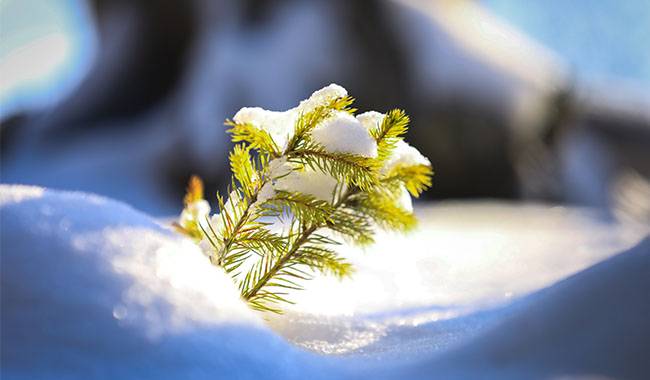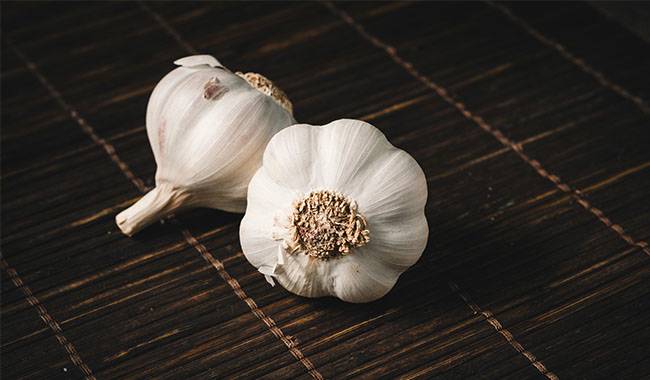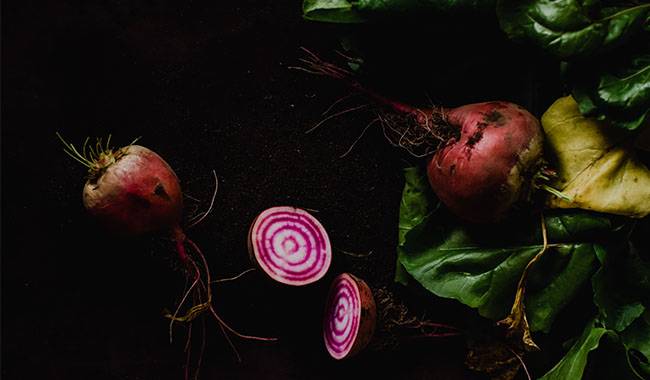
One of the most valuable qualities of a successful gardener is a good allocation of work and time. There is always a lot of work to be done on the ground, so doing certain things in the fall can help relieve some of the stress of spring. But what can make working in the spring easier? The answer is – winter sowing!
WHAT IS WINTER SOWING?
The definition of what is winter sowing is right there in the name of agricultural practice – winter sowing. This means that sowing seeds into seedbeds at a stable air temperature of 32 °F (0 °C) and soil temperature of 35-39 °F (2-4 °C) is called “winter sowing”. In different climatic zones, this moment arrives at different times, if it is around the end of October in one place and in November in others.
WHAT ARE THE BENEFITS OF SOWING WINTER CROPS?
The benefits of sowing vegetables in winter are quite extensive and worth, not overlooking.
- firstly, it is 2 to 3 or 4 weeks earlier than spring sowing.
- secondly, it is more resistant to back frosts, diseases, and pests.
- third, it saves a lot of time in spring projects.
- Finally, by the possibility of repeated sowing, the yield is greater in the same area.
WHAT CAN BE SOWN IN WINTER?
There is a wide selection of crops to sow in the fall. These include spinach, lettuce leaves, radishes, parsnips, dill, beet, carrots, mustard, leeks, cucumber grass, cauliflower, parsley, rhubarb, cauliflower, red kale, and Peking cabbage.
You can also sow garlic and shallots in the winter, and for those who like to grow herbs, you can sow sage, chamomile, and valerian.
HOW DO I SOW SEEDS IN LATE FALL?
To ensure that there are no problems with winter sowing, you should be prepared as early as late September or early October. Preparation includes digging, fertilizing, bed preparation, selecting seeds, and purchasing planting materials.
A fall sowing site should be sunny, wind-free, and high – unaffected by stagnant spring moisture.
Choose seeds wisely: buy varieties that are tolerant of low temperatures and flowering, require shorter daylight hours, and have an early maturity period.
Apply organic and compound fertilizers to winter crops, but be sure to focus on the crop that will be sown.
Sowing should begin when the temperature stabilizes near the zero scales of the thermometer, usually during the first-morning frost. However, you should not rush sowing – if the soil freezes and then thaws, it may provoke the seeds to germinate and then die.
If it is too late, you can also sow seeds during a light frost, but not in the soil of the bed, but in a dry, loose soil prepared in advance. This usually consists of equal proportions of river sand, humus, and garden soil.
Winter sowing increases the seeding rate by 25-50% compared to the usual recommendations.
The sowing depth depends on the soil type: on light soils, sow 0.2 inches (0.5 cm) deeper than usual.
And in any case, winter sowing should not be watered. However, care must be taken to mulch the soil.
CROPS WINTER SOWING IN WINTER
Growing winter garlic

There are two methods of planting winter garlic. They differ in the depth to which the cloves are embedded and therefore in the time of work.
The traditional method is to deepen the planting material to a depth of 1-2 inches (2.5-5 cm), 2 to 3 weeks before the onset of persistent cold weather. In the central region, it is the end of September and in the south and west, it is the beginning of November.
The second method is the deep planting method. The practice is to penetrate the cloves 4-6 inches (10-15 cm) so that they can be worked from mid-August to mid-October. However, it is more efficient in colder climates, as it works best.
However, the choice of planting method is not 100% successful. Prepare a garlic bed correctly. An important rule here is not to allow the application of manure under culture, because this fertilizer reacts to the rapid growth of leaves, the formation of loose heads, and instability to diseases.
Fertilize garlic beds with ash, well-decomposed garden compost – 6.6-8.8 Lb (3-4 kg) per 11 sq. ft., and mineral fertilizers such as nitroglycerin (20-30 g per 11 sq. ft.). If the soil is acidic – introduce it under precursor lime, clay soils – under dredged sand. Dry as well as moist clay soils are not suitable for growing garlic.
When planting, it is better to choose the largest, perfectly healthy, and approved varieties of cloves. Before planting, you should disinfect the planting material with a 0.1% solution of manganese.
It is also important to observe crop rotation in order to grow this crop successfully. Do not plant garlic after onions and potatoes, which like potassium as much as this crop and are affected by the same diseases, but after cucumbers, squash, peppers, tomatoes, and eggplants. If garlic is still planted on garlic, the bed should be sown with vetch after the last harvest, and then the green blocks should be incorporated into the soil.
A common layout for garlic beds is 4×6 inches (10 x 15 cm).
More Related Information About Planting & Growing Garlic
Winter planting of onion seedlings
Overwinter planting of sown onions works well, especially in colder areas, not only for earlier harvest but also for higher yields. Bulbs planted in the fall are less affected by onion fly and false powdery mildew and are easier to weed. And since great effort is necessary to keep planting material until spring, purchased seeding material should be sorted and prepared for planting immediately.
The conditions for planting seedlings coincide with those for growing garlic in winter, but onions can wait for a little if it is necessary to choose which culture to give time to first. There is no difference in the choice of the location for planting onions. However, the soil in the onion bed should be well settled at the beginning of the work, so it should be prepared 2 to 3 weeks in advance. There is no exception to the recommendations of the previous generations.
For a successful onion harvest, it is best to choose special winter varieties for fall planting and be sure to choose healthy planting material. In addition, if there is a choice, you should plant sharp varieties – they overwinter well, do not germinate, and are the same size by harvest as when planted in the spring.
Overseed, there are 4 sections: 0.4-0.6 inch (1-1.5 cm) in diameter, 0.6-1.2 inch (1.5-3 cm), 1 inch (2.5 cm) or more and 0.4 inch (1 cm) or less (oats). Each plant has its own characteristics and therefore is grown separately.
The first part – up to 0.6 inches (1.5 cm) in diameter and oats are the best choice for overwintering sowings because they do not produce shoots and therefore disturb the gardener less. They should be planted at 1.2-6 inches (3 x 15 cm) and should be planted to a position at the head that is suitable for the variety.
Seedlings of 0.6-1.2 inch (1.5-3 cm) size are usually planted for early emergence. In this case, it is either planted compactly or in clutches of 3 bulbs each.
Bulbs larger than 1.2 inch (3 cm) in diameter are planted in a pattern of 3-4 x 6-8 inch (8-10 x 15-20 cm).
Seedling depth is determined by the size of the 3 bulbs plus approximately 0.6 inches (1.5 cm), or the height of the bulbs multiplied by 3, plus 0.8-1.2 inches (2-3 cm) of ground cover.
More Related Information About Planting & Growing Onion
Sowing carrots in winter
Carrots are also suitable for sowing in winter.
Preparing a bed for it, you should remember that this culture prefers loose soil and absolutely does not tolerate undecomposed organic matter (fertilized beds can be used for carrots only for 2-3 years).
Therefore, it is better to dig on the soil, bringing ashes, fertilizers (for example, calcium superphosphate – 20-25 grams per 11 square feet, potassium chloride – 10-15 grams) or mature manure (3-5 kg per 11 square feet), adding sand if the soil is heavy, and if it is acidic – lime or dolomite powder. Let the soil settle, and with the arrival of a stable low temperature (2-4 °C) start sowing.
Cucumbers, potatoes, onions, cabbage, and cucumbers should not be used as a pre-crop for carrots. For a successful harvest, choose early and medium maturing varieties for sowing, or select varieties that can be sown in winter. It is even better if the seeds are granular and – very importantly – dry.
When planting carrots in winter, the sowing rate increases by about 20-25% (about 1 gram per 11 square feet) while providing a deep well-1.5-2 inch (4-5 cm) and furrow spacing of 8-10 inch (20-25 cm).
If sowing during light frosts, fill the furrow with a pre-prepared dry soil substrate or simple, pre-screened garden soil and cover the bed with soil after sowing.
When sowing carrots in autumn, it should be remembered that the storage rate of overwintered crops is low, so do not occupy large areas with them.
More Related Information About Planting & Growing Carrots
Sowing beet in winter

Since beets have a fairly long growing season, up to 130 days for some varieties, planting in the fall is recommended. Seeds can be sown when the weather outside becomes steadily colder, with temperatures of 24-28 °F (-4 to -2°C), and in some climatic zones, as early as the end of October or the beginning of November. The most important rule here is to sow the seeds when they will not germinate, but only swell, otherwise they will die.
When sowing in winter, choose special cold-resistant varieties or early varieties that are resistant to germination. Seeds are sown dry, about 1-2 inch (2.5-5 cm) deep, 2-4 inch (5-10 cm) apart, in rows 12-15 inch (30-40 cm) apart.
Before sowing, the seedbed should be fertilized with organic fertilizer (5 kg per 11 sq. ft.) and phosphorus and potassium fertilizer (15 g per 11 sq. ft.) and if the soil is acidic – make dolomite powder – 1.3 Gal (5 liters) per 11 sq. ft.
It is mandatory for beet and to comply with the crop rotation. It can not be planted after carrots and cabbage, it is recommended to plant after tomatoes, onions, cucumbers, potatoes, and peppers.
In order to get a harvest a week earlier in the seedbeds sown in winter, you can cover the beetroot with a film and remove it when the first shoots appear.
Do not start planting beets in large quantities from autumn, as they do not have a high shelf life.
More Related Information About Planting & Growing Beet
Sowing parsley, dill, and other vegetables in winter
When sowing parsley and dill in autumn it is necessary to follow the same rules as for sowing other crops in winter: dig out the bed in advance and fertilize it, sow the seeds after the frost, slightly increase the depth and sowing rate, and cover the plot with a dry substrate after the work is done.
Sowing parsley, forming rows 8-10 inches (20-25 cm) apart, the depth of its seeds can vary from 0.4-0.6 inches (1-1.5 cm). Fall dill is sown to a depth of 1 inch (2.5 cm), leaving 8 inches (20 cm) between rows. The predecessor of the umbrella plant cannot be a plant of the same family – parsley, carrot, cumin, fennel – but it can be cucumber, cabbage, potato, zucchini.
In addition to parsley and dill, the following crops can be sown for winter: celery, spinach, rhubarb, cucumber grass, parsley, salad mustard. As with all other winter crops, they will germinate well before spring planting and will be a joy to remember to do the right thing.
More Related Information About Planting & Growing Parsley and dill
More Related Information About Planting & Growing Vegetables







